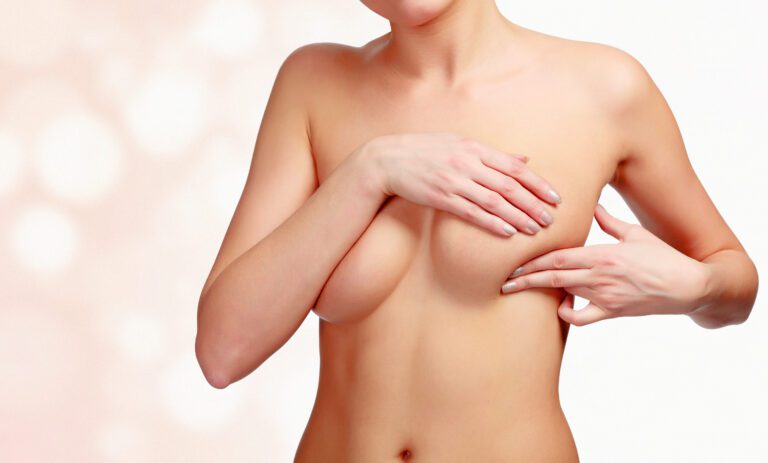How well do you really know your breasts? I mean really know them? And what about how they may change when you’re pregnant? Are you sure you know when or if you should examine them, or have breast imaging such as a mammogram?
No matter your age or whether you’re pregnant or nursing, it’s very important to know your breasts, especially what’s normal for you regarding their look and feel. Knowing what’s normal is the best way to pick up on changes that may need professional care.
What is most important is knowing you’re normal. Be familiar with how your breasts look and feel; this is key to detecting breast disease. We all have our own lumps and bumps, and variations in our breasts. Maybe one breast is larger than the other, maybe there is a mole on one breast.
Feel the glands under the areola (the darker skin around the nipple), and feel the breast tissue near your ribs under your breasts. Menstruation can cause breast tissue to swell and become tender. Some women who use birth control pills also notice their breasts feel heavier or more sensitive. These changes are related to shifting hormones. If you find anything that’s not typical for you, please discuss what you discover with your healthcare provider.
Finding a Lump or Bump
Breast health is a “if you see something; say something” situation. Should you find a lump or bump that wasn’t there before, or a lump or mass that feels like a pea or stone, or a painful or tender area that doesn’t go away within a few weeks or after your menstrual period, or if you see brown/black/milky or bloody nipple discharge, or changes in the skin of the breast that looks dimpled, say something to your healthcare provider. There is never a reason to think you are overreacting or that your concern doesn’t justify a clinical breast exam. These concerns are extremely important and should always be taken seriously.
Your Breasts During Pregnancy
During pregnancy, your breasts will be active when preparing for lactation and can change quite a bit! Many women feel tenderness in their breasts, and because your blood volume increases and hormones surge, your breasts may grow in size. You may see the veins on your breasts grow larger, more blue and noticeable. Your nipples and areola may also look darker. As your breasts grow, they may feel dry or itchy. You may even leak colostrum—your earliest breast milk—during pregnancy. This is normal, but don’t worry if you don’t, that doesn’t mean you won’t be able to successfully breastfeed your baby.
Of course, when you’re breastfeeding your baby, your breasts will change again. They may be firm or larger/ heavier, they may feel lumpy or sore and, especially at first, your nipples may hurt or even crack. You may feel a clogged milk duct—a firm tender swelling from the size of a pea to a plum. You’ll get to know how your breasts feel before you nurse your baby—when your breasts are full—and right after when they’re emptied and softer.
Unfortunately, breast cancer can occur at any time. In fact, it happens in 1 in 3,000 pregnancies and represents up to 3% of all breast cancers! So if you ever feel a lump that is persistent, painful or that increases in size, has unusual or blood nipple discharge, or a dimpling or puckering of the breast skin, let your health care provider know right away. You may not have cancer, but it is very important to be on the safe side.
Mammograms During Pregnancy or Nursing
Is it possible to get a mammogram when you’re pregnant or breastfeeding? Maybe. A screening mammogram, done for routine breast cancer screening for women over 40 or younger women at high risk, should be postponed until after your baby is born. However, if a breast lump is discovered or there is a concern about breast disease or cancer, a diagnostic mammogram should be performed in pregnancy or during lactation.
This is not a screening, but a specialized mammogram that focuses on the area of concern. According to the American College of Radiology, when you are breastfeeding, you can have a screening mammogram. Some radiologists prefer to wait until 3 months after weaning, so ask your healthcare provider what is recommended in your area. Breastfeeding increases breast density, so it’s recommended that you pump or breastfeed to empty your breasts within 2 hours of your scheduled mammogram.
Breast self-awareness is one of the most important ways to take care of your body. Our breasts change so much from adolescence, to adulthood, through pregnancy and lactation, and through menopause. Your breasts are unique, just like you, and getting to know them is key in preventing and detecting breast cancer or other breast diseases. Your healthcare provider is always available to you to share expertise, provide reassurance, and assist in evaluating anything abnormal. Just don’t be afraid to ask. Remember – you are your own breast advocate!
YOU MAY ALSO LIKE: How Did I Develop Gestational Diabetes?






Comments are closed.